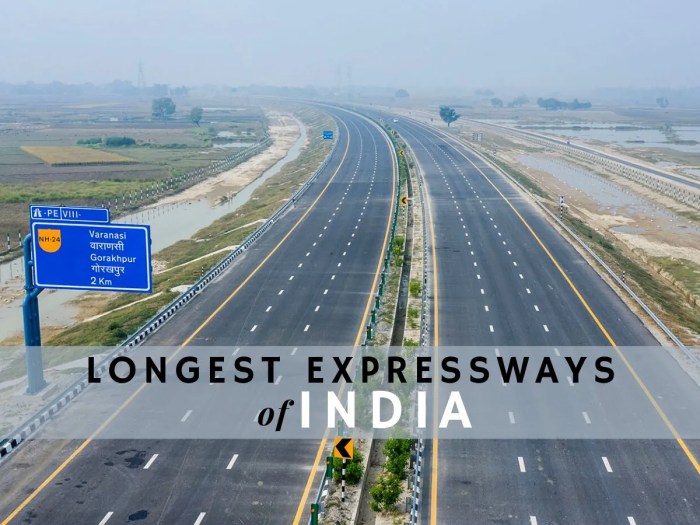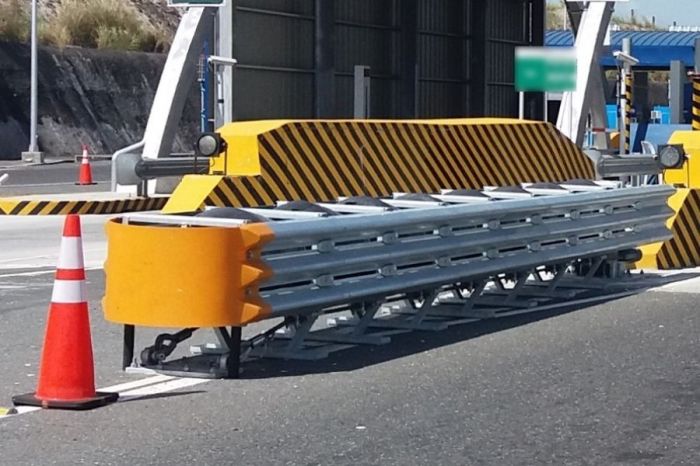Expressways are safer than other types of roads because – Expressways stand as a testament to the advancements in road engineering, offering unparalleled safety compared to other road types. Their meticulously crafted design, optimized traffic flow, and focus on driver behavior have revolutionized road safety, making expressways the preferred choice for efficient and secure travel.
This in-depth analysis delves into the intricate details of expressway design, exploring how each element contributes to their superior safety record. From controlled traffic flow to limited access points, every aspect has been carefully considered to minimize accidents and enhance driver confidence.
Expressways: Safer than Other Road Types: Expressways Are Safer Than Other Types Of Roads Because

Expressways, designed for high-speed traffic, offer enhanced safety features compared to other road types. Their meticulously engineered design, controlled traffic flow, and emphasis on driver behavior contribute significantly to reducing accident rates.
Design Comparisons
Expressways incorporate several design elements that prioritize safety:
- Wide lanes:Ample lane width provides drivers with more room to maneuver, reducing the risk of collisions.
- Clear sightlines:Unobstructed views allow drivers to anticipate potential hazards and react accordingly.
- Separated lanes:Physical barriers between lanes minimize the likelihood of head-on collisions and side-swipes.
- Controlled access:Limited entry and exit points eliminate potential conflicts with cross-traffic.
Traffic Flow and Safety
Expressways’ controlled traffic flow contributes to safety in several ways:
- Reduced congestion:Wide lanes and separated lanes promote smooth traffic flow, reducing the potential for accidents caused by stop-and-go traffic.
- Limited access points:Fewer intersections and entry/exit ramps minimize the risk of collisions at these vulnerable locations.
- Consistent speeds:Expressways encourage drivers to maintain consistent speeds, reducing the likelihood of speed-related accidents.
Driver Behavior and Safety
The design of expressways influences driver behavior and promotes safer practices:
- Reduced distractions:Wide lanes and clear sightlines minimize distractions, allowing drivers to focus on the road ahead.
- Encouragement of defensive driving:Limited access points and separated lanes encourage drivers to be more aware of their surroundings and adopt defensive driving techniques.
- Reduced fatigue:Consistent speeds and reduced congestion minimize driver fatigue, improving alertness and reaction times.
Emergency Response and Safety, Expressways are safer than other types of roads because
Expressways facilitate efficient emergency response:
- Wide lanes:Ample lane width allows emergency vehicles to pass through traffic quickly and safely.
- Clear sightlines:Unobstructed views enable emergency responders to assess the situation and respond appropriately.
- Access points:Controlled access points provide designated areas for emergency vehicles to enter and exit the expressway.
Maintenance and Safety
Regular maintenance plays a crucial role in expressway safety:
- Pavement repairs:Timely repairs prevent pavement deterioration, reducing the risk of accidents caused by potholes or uneven surfaces.
- Lighting upgrades:Adequate lighting improves visibility during nighttime and adverse weather conditions.
- Vegetation control:Regular vegetation control prevents overgrown vegetation from obscuring sightlines or creating hazards.
Frequently Asked Questions
Why are expressways safer than other roads?
Expressways incorporate numerous safety features, including controlled traffic flow, limited access points, separated lanes, and wide lanes, which collectively reduce accidents and improve driver safety.
How does traffic flow contribute to expressway safety?
Controlled traffic flow on expressways minimizes congestion, reduces speed variations, and eliminates unpredictable maneuvers, leading to fewer accidents.
In what ways does expressway design influence driver behavior?
Expressway design encourages safer driving practices by providing clear sightlines, consistent speeds, and limited distractions, reducing the likelihood of driver errors.


